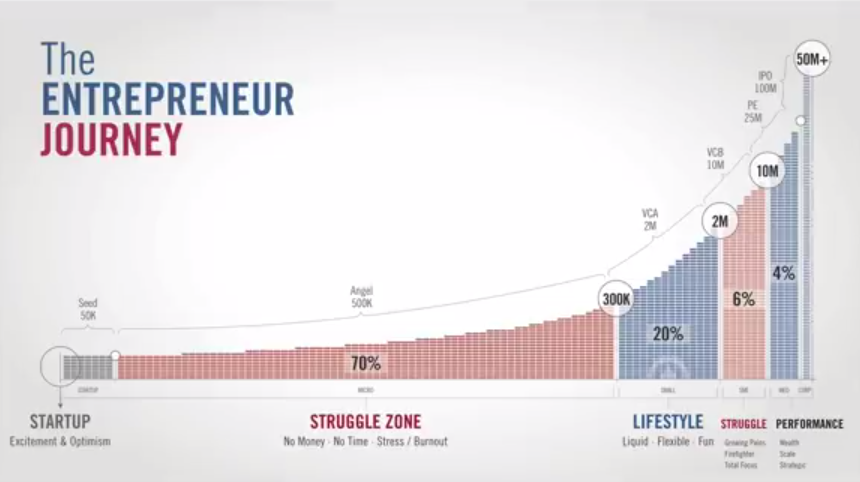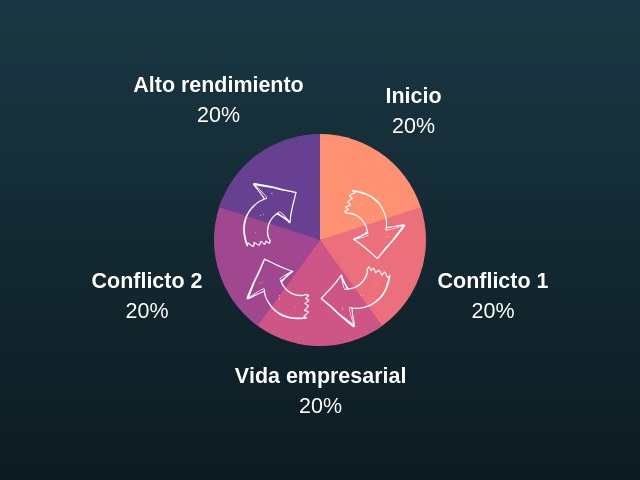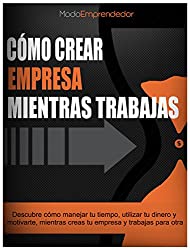
The path of the entrepreneur is more predictable than many think. With so many cases of successful entrepreneurs in various industries, there are enough examples to know what the stages of a venture.
In this way, Glen Carlson, co-founder of Key Person of Influence, has designed “The Entrepreneur Journey” or The Path of the Entrepreneur.
After having worked with hundreds of entrepreneurs, who have built multi-million dollar companies around the world; he defined the 5 stages of a venture.
Each of these stages has its own challenges and problems. However, the important thing is to understand where you are on the path to know what actions will take you to the next level.
Let’s see the 5 stages of a venture:
 5 stages of a venture:
5 stages of a venture:



1. Startup: Starting up.
At this stage there is clearly an idea. However, there is no defined business model. There is no work team. And of course there is not enough money to give the initial push.
there is a lot excitement and optimismbut there are no tangible results at the moment.
two. Struggle zone: Conflict zone.
70% of companies are at this stage, since there is great competition.
At this point, much of the future of the business depends on its founder and his coping skills.
In this phase, the founder must invest most of the time within the company. Without the possibility of delegating, because the business model is just being built and its work team has a maximum of 3 employees.
read also The worst excuses for not starting your own business
The lack of clarity and the inability to communicate the company’s value proposition keep the entrepreneur trapped in this stage.
Additionally, the lack of credibility on the part of the market, and the lack of differentiation from other companies hinder the way. Added to this is the lack of money to re-invest, pay salaries and maintain operations.
The founder must be in all areas of the company; investing much of their time in operational activities that do not have automated processes.
If the creator stops, the whole company comes to a standstill.
3. Lifestyle Business: Business lifestyle.



This is one of the most interesting stages of a venture. Since the entrepreneur can move away from operational activities to work more on the strategic part of his business.
20% of companies manage to leave the conflict zone and enter this stage. The founder is already recognized in the industry as a key player.
The level of profits increases considerably, allowing the entrepreneur to have a better income. And to the company, to cover many of the expenses and investments that are required at this stage.
In addition, the founder begins to have more freedom; having the possibility to move away geographically without affecting his business.
His work team reaches approximately 20 people. The opportunities begin to increase and the company has more recognition.
Additionally, there is great security and ability to communicate the company’s value proposition and a scalable business model has been created.
Last but not least, strategic alliances have been created with key companies in the market.
The key point in this stage is to make the decision to continue growing to enter the next phase.
read also 5 reasons to create your own business
Four. Struggle zone 2: Second zone of conflict.
Approximately 6% of companies enter this stage.
The goal of this phase is to increase the size of a business that is already running. For this, it is necessary to hire more staff, assume more debt to invest and open more branches or offices.
There are high incomes thanks to an increase in sales but low profits, due to the increase in operating expenses and obligations.
These characteristics make the business unattractive for mergers or acquisitions; leaving you without many options.
This stage is characterized by being quite uncomfortable and very risky to make decisions.
A bigger company has bigger problems. The founder not only has to double his efforts to get more business and double the size of his income; but he must also bear the burden of new problems at the level of financial management, human resources, legal and social problems, among others.
5. High Performance Zone: High performance zone.
Only 4% of companies manage to enter this phase of the journey.
Those that arrive have managed to increase their staff by creating work groups of between 50 and 150 collaborators; enjoying high levels of profit.
The company has multiple products that are sold in different markets and are highly appreciated by customers. The founders play a clearly strategic role and are recognized as visionary leaders.
Conclusion.
The construction of these 5 stages of a venture ends with a very important requirement: the emotional intelligence ability of the founders to positively influence their environment; no matter what phase they are in.
Anything that reduces your ability to influence reduces your ability to succeed. If you want to know more, watch the following video.
And remember, if you are really interested in creating your own business, you can read our book “How to create a company while working: Discover how to manage your time, manage your money and motivate yourself while creating a company and working for another” , where you will find all the information you need to found your own company, without having to leave your job.



